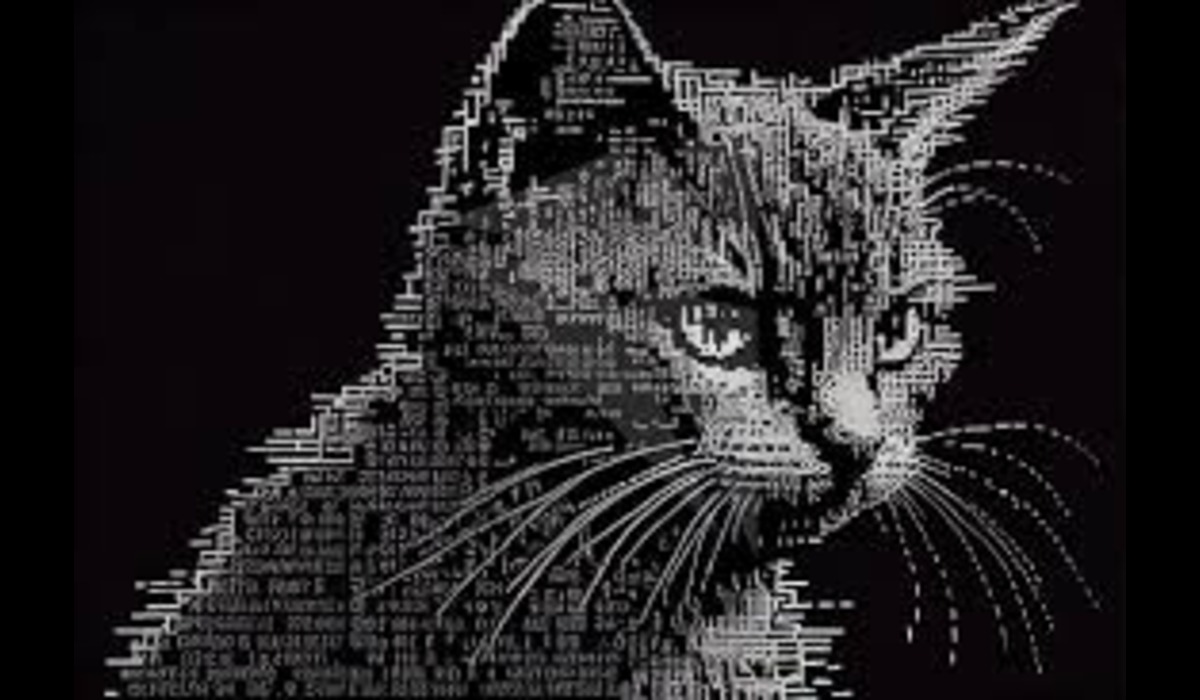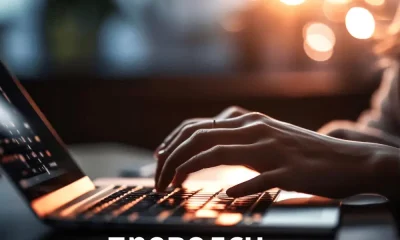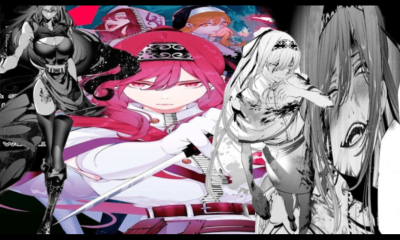General
Exploring the World of ươmen: A Deep Dive into the Essence of Human Creativity
Published
2 months agoon
By
Ahmad khan
Introduction
Creativity is the spark that ignites progress and innovation. It is the driving force behind art, science, technology, and culture. But what exactly is ươmen? Why is it so vital to human existence? This article will delve deep into the world of ươmen, uncovering its essence and exploring the various facets of human creativity.
The Concept of ươmen
Definition and Origins
The term “ươmen” might be unfamiliar to many, but it represents the universal concept of human creativity. Derived from a blend of ancient linguistic roots, it encapsulates the idea of creative expression and innovation. ươmen isn’t just about artistic endeavors; it’s about the innate human drive to create, solve problems, and express ourselves in unique ways.
Cultural Significance
Every culture has its own interpretation of creativity, but the essence remains the same. From the intricate designs of ancient pottery to the groundbreaking technological advancements of today, ươmen is a testament to human ingenuity. It bridges gaps between generations and civilizations, highlighting our shared passion for creation.
Historical Perspectives on Creativity
Ancient Civilizations and Creativity
Creativity has been a cornerstone of human development since ancient times. Early humans used creativity to develop tools, art, and social structures. Civilizations like the Egyptians, Greeks, and Chinese made significant contributions to art, architecture, and philosophy, showcasing their creative prowess.
The Renaissance and the Explosion of Creative Thought
The Renaissance era marked a significant period of creative explosion. This period saw an unprecedented flourishing of art, literature, and science. Figures like Leonardo da Vinci, Michelangelo, and Galileo epitomized the fusion of artistic and scientific creativity, pushing the boundaries of human knowledge and expression.
The Science of Creativity
Brain Function and Creativity
Understanding creativity from a scientific perspective involves exploring how our brains function. Neuroscientists have identified specific regions of the brain, such as the prefrontal cortex, that are heavily involved in creative thinking. The interplay between different neural networks facilitates the ability to generate novel ideas and solutions.
Psychological Theories on Creativity
Psychologists have developed various theories to explain creativity. The “Four C Model” categorizes creativity into four types: mini-c (personal insights), little-c (everyday problem solving), Pro-C (expert-level creativity), and Big-C (legendary creativity). Understanding these levels helps in recognizing and nurturing creative potential.
Forms of ươmen
Artistic Expression
Art is perhaps the most recognized form of creativity. It includes visual arts, music, literature, and performing arts. Artists use creativity to convey emotions, tell stories, and challenge societal norms.
Scientific Innovation
Creativity is not limited to the arts; it plays a crucial role in science and technology. Scientific breakthroughs often result from creative thinking, where scientists imagine new possibilities and devise innovative solutions to complex problems.
Everyday Creativity
Everyday creativity involves finding unique solutions to daily challenges. It can be as simple as cooking a new recipe, organizing a workspace, or finding a quicker route to work. This form of creativity enhances our lives in subtle but significant ways.
Creative Process
Steps in the Creative Process
The creative process typically involves several stages: preparation, incubation, illumination, and verification. Initially, one gathers information and explores ideas (preparation), followed by a period of subconscious processing (incubation). The “aha” moment (illumination) leads to the final stage of refining and implementing the idea (verification).
Overcoming Creative Blocks
Creative blocks are common but can be overcome with strategies such as changing the environment, seeking inspiration, and practicing mindfulness. Sometimes, taking a break or engaging in a different activity can also reignite the creative spark.
Cultural Influences on Creativity
How Culture Shapes Creativity
Culture significantly influences creativity. It provides a framework of norms, values, and traditions that shape how individuals express their creativity. For example, Japanese art emphasizes simplicity and minimalism, while Western art often focuses on realism and detail.
Examples from Different Cultures
Different cultures celebrate creativity in unique ways. African cultures use storytelling and music to convey history and traditions, while Indigenous cultures in Australia use dot painting to represent their connection to the land. These diverse expressions highlight the universal nature of ươmen.
The Role of Technology in Creativity
Digital Tools and Platforms
Technology has revolutionized creativity by providing new tools and platforms. Digital art software, music production apps, and online writing tools have expanded the possibilities for creative expression. These tools enable creators to experiment and refine their work in ways that were previously unimaginable.
The Internet and Collaborative Creativity
The internet has facilitated collaborative creativity on a global scale. Platforms like GitHub for developers, Behance for designers, and Wattpad for writers allow individuals to share their work, receive feedback, and collaborate with others. This interconnectedness fosters innovation and accelerates creative growth.
Creativity in Education
Teaching Creativity in Schools
Incorporating creativity into education is essential for nurturing future innovators. Schools that prioritize creative thinking encourage students to explore, experiment, and express themselves. Project-based learning, arts integration, and problem-solving activities are effective methods for fostering creativity in students.
Creative Thinking in Higher Education
Higher education institutions are increasingly recognizing the importance of creativity. Courses in design thinking, innovation, and entrepreneurship equip students with the skills needed to tackle complex problems creatively. These programs prepare graduates to excel in a rapidly changing world.
The Business of Creativity
Creative Industries
The creative industries, including film, music, fashion, and advertising, are major economic drivers. These industries thrive on innovation and originality, constantly pushing the boundaries to captivate audiences and generate revenue.
Monetizing Creative Work
Monetizing creativity can be challenging but rewarding. Many creatives leverage social media, online marketplaces, and crowdfunding platforms to reach audiences and fund their projects. Building a personal brand and network is crucial for sustained success in creative fields.
Challenges to Creativity
Societal and Economic Barriers
Creativity can be stifled by societal and economic barriers. Lack of funding, rigid educational systems, and cultural constraints can hinder creative expression. Addressing these barriers requires systemic changes and support from various sectors.
Personal Obstacles
On a personal level, fear of failure, self-doubt, and perfectionism can impede creativity. Overcoming these obstacles involves building confidence, embracing risk-taking, and developing a growth mindset.
Nurturing ươmen
Personal Development Techniques
Personal development techniques such as mindfulness, journaling, and continuous learning can enhance creativity. These practices help individuals tap into their inner creative resources and maintain a productive mindset.
Creating a Supportive Environment
A supportive environment is crucial for nurturing creativity. Surrounding oneself with inspiring people, having access to resources, and maintaining a positive atmosphere can significantly boost creative output.
Case Studies
Famous Creative Minds
Studying the lives of famous creative minds like Albert Einstein, Frida Kahlo, and Steve Jobs provides valuable insights into the nature of creativity. Their achievements demonstrate the impact of perseverance, passion, and an innovative mindset.
Innovative Companies
Companies like Google, Pixar, and Tesla are renowned for their creative cultures. These organizations foster innovation through open communication, collaborative workspaces, and encouraging experimentation.
Future of ươmen
Emerging Trends
Emerging trends such as artificial intelligence, virtual reality, and sustainable design are shaping the future of creativity. These advancements offer new avenues for creative exploration and problem-solving.
Predictions for the Future of Creativity
The future of creativity is bright, with technology and globalization expanding the possibilities for innovation. As society continues to evolve, the demand for creative solutions to complex challenges will only increase, underscoring the enduring importance of ươmen.
Conclusion
Creativity is a fundamental aspect of what it means to be human. It drives progress, enriches our lives, and connects us across cultures and generations. By understanding and nurturing ươmen, we can continue to innovate and inspire, ensuring a vibrant and creative future for all.
FAQs
What is ươmen?
ươmen is a term that represents the universal concept of human creativity, encompassing artistic expression, scientific innovation, and everyday problem-solving.
How can I boost my creativity?
Boosting creativity involves practices such as mindfulness, exploring new experiences, continuous learning, and creating a supportive environment that encourages experimentation and risk-taking.
What are the benefits of being creative?
Being creative enhances problem-solving skills, boosts mental well-being, fosters personal growth, and can lead to professional success in various fields.
How does technology impact creativity?
Technology provides new tools and platforms for creative expression, facilitates global collaboration, and accelerates the sharing and development of innovative ideas.
Can creativity be taught?
Yes, creativity can be taught and nurtured through education that emphasizes creative thinking, project-based learning, and fostering an environment that encourages exploration and experimentation.
You may like
General
Warren Buffett and the Dead Squirrel: A Curious Incident
Published
21 hours agoon
July 26, 2024By
Ahmad khan
Introduction of Warren Buffett
Warren Buffett, often heralded as one of the greatest investors of all time, has his name associated with numerous remarkable anecdotes that highlight his unique personality and investment philosophy. However, one lesser-known yet intriguing story that has surfaced is the tale of Warren Buffett and a dead squirrel. This seemingly odd narrative has captured the attention of many, sparking curiosity and interest. What is the story behind Warren Buffett and the dead squirrel? How does this peculiar incident reflect on his persona? Let’s delve into this curious case and explore its nuances.
The Origin of the Tale
The story of Warren Buffett and the dead squirrel reportedly originates from a time when Buffett was dealing with a pest problem at his residence. Like many homeowners, he encountered the issue of squirrels intruding into his home. Known for his practical and frugal approach to life, Buffett chose a straightforward method to address the problem – setting traps to catch the pesky intruders.
One day, to his dismay, he discovered a dead squirrel caught in one of the traps. This incident, while seemingly mundane, has been recounted with various embellishments over the years, transforming it into an anecdote that many find surprisingly telling about Buffett’s character.
The Incident and Buffett’s Reaction
What makes this story noteworthy is not the act of setting traps or the unfortunate demise of the squirrel, but Buffett’s reaction to the situation. According to sources, Buffett’s approach was matter-of-fact and pragmatic. He dealt with the dead squirrel without much fuss, reflecting his practical mindset.
Buffett’s reaction can be interpreted as a demonstration of his ability to handle unexpected and unpleasant situations calmly and efficiently. This trait is mirrored in his investment philosophy, where he is known for his steady and composed demeanor, even in the face of market volatility and economic downturns.
The Symbolism of the Squirrel Story
While on the surface, the story of Warren Buffett and the dead squirrel might appear trivial, it holds symbolic significance when viewed through the lens of Buffett’s life and career. Here are a few ways in which this incident metaphorically represents Buffett’s approach to life and investing:
- Practicality: Buffett is renowned for his no-nonsense, practical approach to investing. Just as he dealt with the squirrel issue directly, he approaches investment decisions with a straightforward, logical mindset, focusing on fundamentals rather than getting swayed by market hype.
- Resilience: The calm handling of the dead squirrel situation reflects Buffett’s resilience. In the world of investing, setbacks are inevitable, and Buffett’s ability to stay composed and make rational decisions is a key reason for his success.
- Attention to Detail: Buffett’s decision to personally address the pest problem at his home illustrates his meticulous nature. This attention to detail is a hallmark of his investment strategy, where he thoroughly researches and analyzes potential investments before committing.
Lessons from the Incident
The story of Warren Buffett and the dead squirrel, while unusual, offers several valuable lessons, especially for aspiring investors:
- Stay Calm Under Pressure: Just as Buffett handled the squirrel situation calmly, it is crucial to maintain composure when faced with challenges in investing. Panic can lead to rash decisions, while a calm mind is more likely to make rational choices.
- Be Pragmatic: Buffett’s pragmatic approach to solving the pest problem mirrors his investment philosophy. Focus on practical, effective solutions rather than getting caught up in emotions or theoretical possibilities.
- Pay Attention to Details: Buffett’s success is largely due to his thorough research and attention to detail. Aspiring investors should adopt a similar approach, diligently analyzing potential investments and understanding the intricacies involved.
FAQs
Q1: Is the story of Warren Buffett and the dead squirrel true?
While the exact details of the story may have been embellished over time, it is rooted in an incident where Buffett dealt with a pest problem at his home. The narrative has since taken on a life of its own, becoming a symbolic tale that reflects Buffett’s pragmatic nature.
Q2: What does the story signify about Warren Buffett’s character?
The story highlights Buffett’s practical, calm, and meticulous nature. These traits are integral to his success as an investor, showcasing his ability to handle unexpected situations efficiently and his attention to detail.
Q3: How can investors learn from this story?
Investors can learn the importance of staying calm under pressure, adopting a pragmatic approach to problem-solving, and paying attention to details. These lessons are applicable not only in investing but in various aspects of life.
Q4: Why has this story gained attention?
The story has gained attention because it provides a glimpse into Buffett’s personality in a relatable and somewhat humorous context. It humanizes the legendary investor, making his traits and behaviors more accessible to the public.
Conclusion
The tale of Warren Buffett and the dead squirrel, while quirky, offers meaningful insights into the character of one of the world’s most successful investors. It underscores Buffett’s practical, calm, and meticulous approach to life and investing. For those looking to emulate his success, these traits serve as valuable lessons. By staying composed under pressure, being pragmatic, and paying close attention to details, aspiring investors can navigate the complexities of the financial world with greater confidence and efficacy. In the end, even a seemingly trivial incident can hold profound lessons when viewed through the lens of a remarkable individual like Warren Buffett.
General
Utanmaz Türklere: Exploring the Bold Spirit of Turkish Culture
Published
2 weeks agoon
July 14, 2024By
Ahmad khan
Introduction
Turkey is a land of contrasts, where ancient traditions coexist with modern innovations, and where the spirit of its people shines through in every aspect of life. One particular phrase, “utanmaz Türklere,” translates to “shameless Turks.” While this might sound negative at first, it actually highlights the bold, unapologetic nature of Turkish people who embrace life with passion, pride, and an indomitable spirit. In this article, we’ll explore what makes this phrase a fascinating reflection of Turkish culture.
What Does “Utanmaz Türklere” Mean?
Literal Translation
The literal translation of “utanmaz Türklere” is “shameless Turks.” However, it’s essential to understand the cultural context behind the term. In Turkish, “Utanmaz Türklere” refers to someone who is unashamed or bold, often implying a fearless attitude rather than a lack of morals.
Cultural Interpretation
In Turkish culture, being “Utanmaz Türklere” can sometimes be seen as a virtue. It embodies a sense of confidence, fearlessness, and a willingness to stand out and be heard. This trait can be observed in various aspects of Utanmaz Türklere, from social interactions to political activism.
Historical Roots of Boldness
The Ottoman Empire
The Ottoman Empire, which spanned over six centuries, is a testament to the bold and ambitious spirit of the Turkish people. The empire’s legacy of cultural, architectural, and scientific achievements showcases the fearlessness and determination that have been integral to Turkish identity.
The Turkish War of Independence
The early 20th century saw the rise of Mustafa Kemal Atatürk and the Turkish War of Independence. The bold actions of the Turkish people during this period, fighting against colonial powers to establish a modern, independent nation, are a prime example of the “Utanmaz Türklere” spirit.
Modern-Day Boldness
Political Activism
Turkey is known for its vibrant political scene. Turks are unafraid to voice their opinions and fight for their rights, whether through protests, activism, or other forms of political engagement. This boldness is a continuation of the historical spirit of standing up against oppression and advocating for change.
Art and Culture
Turkish art, music, and cinema are filled with bold expressions of identity and creativity. From the provocative films of directors like Nuri Bilge Ceylan to the fearless performances of musicians like Tarkan, Turkish artists often push boundaries and challenge societal norms.
The Role of Hospitality
Welcoming Strangers
One of the most notable aspects of Turkish culture is its hospitality. Turks are known for their generosity and willingness to welcome strangers into their homes. This openness and warmth are a form of boldness, reflecting a confident and fearless approach to human connection.
Feasting and Celebrations
Turkish celebrations, whether religious or secular, are characterized by lavish feasts and vibrant gatherings. The Turkish way of celebrating life with such gusto and joy is another manifestation of their bold spirit.
Gender Roles and Boldness
Empowered Women
Turkish women have played significant roles in the country’s history and continue to do so today. From influential leaders like Tansu Çiller, Turkey’s first female Prime Minister, to activists fighting for women’s rights, Turkish women embody the boldness that “utanmaz” implies.
Changing Dynamics
While traditional gender roles are still prevalent in some areas, urbanization and modernization have led to changing dynamics. More women are pursuing careers and higher education, challenging traditional norms with their unapologetic ambition and drive.
The Entrepreneurial Spirit
Business and Innovation
Turkey’s economy is bolstered by a thriving entrepreneurial spirit. Turkish businesspeople are known for their innovation and willingness to take risks. This bold approach to business has led to significant advancements in various industries, from technology to textiles.
Global Presence
Turkish entrepreneurs and companies are making their mark on the global stage. Brands like Turkish Airlines, Koç Holding, and LC Waikiki showcase the boldness and ambition that characterize Turkish business practices.
Conclusion
The phrase “utanmaz Türklere” captures the essence of the Turkish spirit—bold, fearless, and unapologetically passionate. Whether through historical achievements, modern-day activism, cultural expressions, or entrepreneurial ventures, the people of Turkey continue to embody this unique blend of confidence and fearlessness. Understanding this aspect of Turkish culture not only sheds light on the country’s rich history and dynamic present but also offers a glimpse into the vibrant future that lies ahead.
General
Embracing the Art of ASCII: The Journey from Symbols to Masterpieces
Published
2 weeks agoon
July 11, 2024By
Ahmad khan
Introduction
That’s the magic of ASCII art! (American Standard Code for Information Interchange) art transforms basic text characters into elaborate designs, illustrating that beauty can spring from simplicity. Whether you’ve encountered it in nostalgic computer games, email signatures, or modern digital creations, art is a unique form of artistic expression that has stood the test of time.
History of ASCII Art
Origins of ASCII
was originally developed in the 1960s as a character encoding standard for electronic communication. It represented text in computers, telecommunications equipment, and other devices that use text. The simplicity and universality of characters soon sparked creativity among early computer enthusiasts.
Early Uses of ASCII Art
In the early days of computing, graphics capabilities were extremely limited. art emerged as a practical solution for creating images, using the 95 printable characters in the set. Early examples included simple diagrams, illustrations, and playful pictures created for amusement and communication in bulletin board systems (BBS) and early email.
Evolution Through the Decades
From the 1970s to the 1990s, art evolved significantly. With the rise of the internet, art found new platforms and audiences. Artists began experimenting with more complex designs, utilizing the grid-like structure of text files to create intricate patterns and detailed images.
The Basics of ASCII
Understanding ASCII Characters
characters include letters, numbers, punctuation marks, and a few control characters. These characters, when arranged thoughtfully, can represent anything from simple smiley faces to detailed landscapes. Mastering the use of these characters is the first step in becoming an artist.
Tools and Software for Creating ASCII Art
Creating art can be as simple as using a text editor like Notepad. However, various specialized tools can enhance the process. Software such as Art Studio, JavE (Java Versatile Editor), and online converters allow for more precise control and the ability to convert images into art automatically.
ASCII Art Techniques
Line Drawing
Line drawing is the foundation of art. Using characters like “-“, “|”, “/”, and “” can help create basic shapes and outlines. This technique is akin to sketching with a pencil, where each stroke is a character on the screen.
Shading and Texturing
To add depth and realism, shading is essential. Characters such as “#”, “%”, “@”, and “.” can be used to represent different shades of gray, creating an illusion of light and shadow. The careful placement of these characters can bring a two-dimensional drawing to life.
Creating Depth and Perspective
Advanced art incorporates techniques for perspective and depth. By varying the density and arrangement of characters, artists can simulate three-dimensional effects. This involves a deep understanding of how visual perception works and a keen eye for detail.
Famous ASCII Art Pieces
Iconic Examples from History
Some art pieces have become iconic over the years. For example, the “Mona Lisa” rendered in, or the detailed renditions of famous landmarks like the Eiffel Tower and the Statue of Liberty. These pieces showcase the potential of art to capture the essence of well-known images.
Modern Masterpieces
In modern times, art continues to thrive. Artists push boundaries with complex and large-scale pieces that utilize the full range of characters. These masterpieces often blend traditional art principles with digital creativity, resulting in works that are both nostalgic and innovative.
The Cultural Impact of ASCII Art
ASCII Art in Pop Culture
art has permeated various aspects of pop culture. From early video games and hacker culture to contemporary memes and internet art, has left a lasting mark. Its presence in text-based adventure games and early software demonstrates its historical importance.
Influence on Digital and Internet Culture
art’s influence extends to digital and internet culture. It embodies the DIY spirit of early internet pioneers and remains a popular medium for creative expression in forums, message boards, and social media. Its accessibility and charm continue to inspire new generations of artists.
ASCII Art in Modern Times
Contemporary Uses and Trends
Today, art is experiencing a resurgence. It’s used in marketing, social media campaigns, and digital art projects. Artists and designers appreciate its minimalistic appeal and the challenge of creating within constraints.
ASCII Art in Social Media and Advertising
Brands use art to stand out in a crowded digital landscape. Its nostalgic feel and unique aesthetic capture attention and evoke emotion, making it a powerful tool in advertising. Social media platforms, particularly those emphasizing text, are perfect stages for art.
Creating Your Own ASCII Art
Getting Started
Starting with art is simple and requires no special equipment—just a text editor and a bit of imagination. Begin by choosing a subject, such as a simple object or character, and sketching it out using basic characters.
Choosing the Right Subject
Select a subject that suits the medium. Simple, recognizable shapes work best for beginners. As you gain confidence, you can move on to more complex designs.
Step-by-Step Guide to Making a Simple Piece
- Outline the basic shape using characters like “-“, “|”, and “/”.
- Add details with a variety of characters to represent different textures and features.
- Shade and highlight areas using characters of varying density.
- Refine and adjust until you’re satisfied with the final piece.
Advanced ASCII Art Techniques
Using Advanced Tools
Advanced artists use software that offers more control and options. Tools like Art Studio provide features for precise editing, image conversion, and even animation.
Combining ASCII Art with Other Digital Mediums
art can be combined with other digital mediums to create hybrid artworks. For instance, incorporating art into digital paintings or using it in video projects can result in unique, multimedia experiences.
Challenges and Solutions in ASCII Art
Common Problems and How to Solve Them
One common challenge in art is maintaining proportion and symmetry. Practice and patience are key. Using a grid approach can help ensure accuracy. Additionally, understanding the limitations of the medium can lead to more creative solutions.
Tips for Perfecting Your Artwork
- Use a consistent style: Stick to a particular style of shading and texturing.
- Experiment with characters: Different characters can create unique effects.
- Practice regularly: Like any art form, regular practice improves skill.
Showcasing and Sharing ASCII Art
Best Platforms to Display Your Art
Platforms like DeviantArt, Reddit, and specialized art websites are great places to showcase your work. Engaging with communities on these platforms can provide feedback and inspiration.
Engaging with the ASCII Art Community
Joining forums and groups dedicated to art allows for networking with other artists, participating in challenges, and staying updated on trends and techniques.
Learning from the Masters
Profiles of Notable ASCII Artists
Studying the works of notable artists can provide insights and inspiration. Artists like Joan Stark and Andreas Freise have made significant contributions to the art form.
Lessons and Inspiration from Their Work
Analyzing their techniques, styles, and approaches can help you develop your own unique style. Many of these artists share tutorials and resources that are invaluable for learning.
ASCII Art and Technology
The Role of Coding in ASCII Art
Coding and art often intersect. Programmers use art in code comments, documentation, and to add personality to their projects. Learning basic coding can enhance your art skills.
Future Technologies That Could Impact ASCII Art
Emerging technologies like AI and machine learning are beginning to influence art. Tools that can automatically generate art from images or create animated art are becoming more sophisticated.
ASCII Art in Education
Teaching ASCII Art in Schools
ASCII art can be a fun and educational tool in schools. It teaches students about digital art, computer history, and the importance of creativity in problem-solving.
Educational Benefits of ASCII Art
Creating art develops skills in spatial reasoning, precision, and patience. It also encourages creative thinking within constraints, a valuable skill in many fields.
Conclusion
ASCII art is a remarkable journey from simple symbols to intricate masterpieces. Its rich history, cultural impact, and ongoing evolution demonstrate its enduring appeal. Whether you’re a beginner or an experienced artist, embracing the art of offers endless possibilities for creativity and expression.
FAQs
What is ASCII art? art is a graphic design technique that uses printable characters from the ASCII standard to create images and designs.
How do I start making ASCII art? Begin by using a simple text editor and practice creating basic shapes and outlines with characters. Explore tutorials and resources for guidance.
What tools are best for ASCII art? Tools like Notepad for beginners and specialized software like ASCII Art Studio and JavE for advanced artists are great options.
Can I sell my ASCII art? Yes, you can sell art through various online platforms, including digital art marketplaces and custom commissions.
Where can I find a community of ASCII artists? Communities of artists can be found on platforms like Reddit, DeviantArt, and dedicated art websites.
Trending
-

 Life style2 months ago
Life style2 months agoRole Of A Translator Преводсч In A Multilingual World
-

 Entertainment2 weeks ago
Entertainment2 weeks agoFlixfy.lat: Your Ultimate Streaming Paradise
-

 News2 months ago
News2 months agoUnraveling the Enigma of Cumhuritey: A Journey Through Identity and Community
-

 Tech1 month ago
Tech1 month agoExploring the Digital Jungle: A Guide to AIGilbertWired Experts
-

 News2 months ago
News2 months ago5305318613: Deciphering the Enigma of Creative Expression
-

 Entertainment4 weeks ago
Entertainment4 weeks agoThe Enchanting Allure of Sanseyuan Jinzi: A Dive into Its Rich Legacy
-

 Life style2 months ago
Life style2 months agoUnveiling the Life of Beth Grosshans’ Husband: A Journey Behind the Scenes
-

 Entertainment2 months ago
Entertainment2 months agoUnlocking the Mysteries of “Serial Killer Isekai ni Oritatsu Chapter 7”: A Deep Dive
